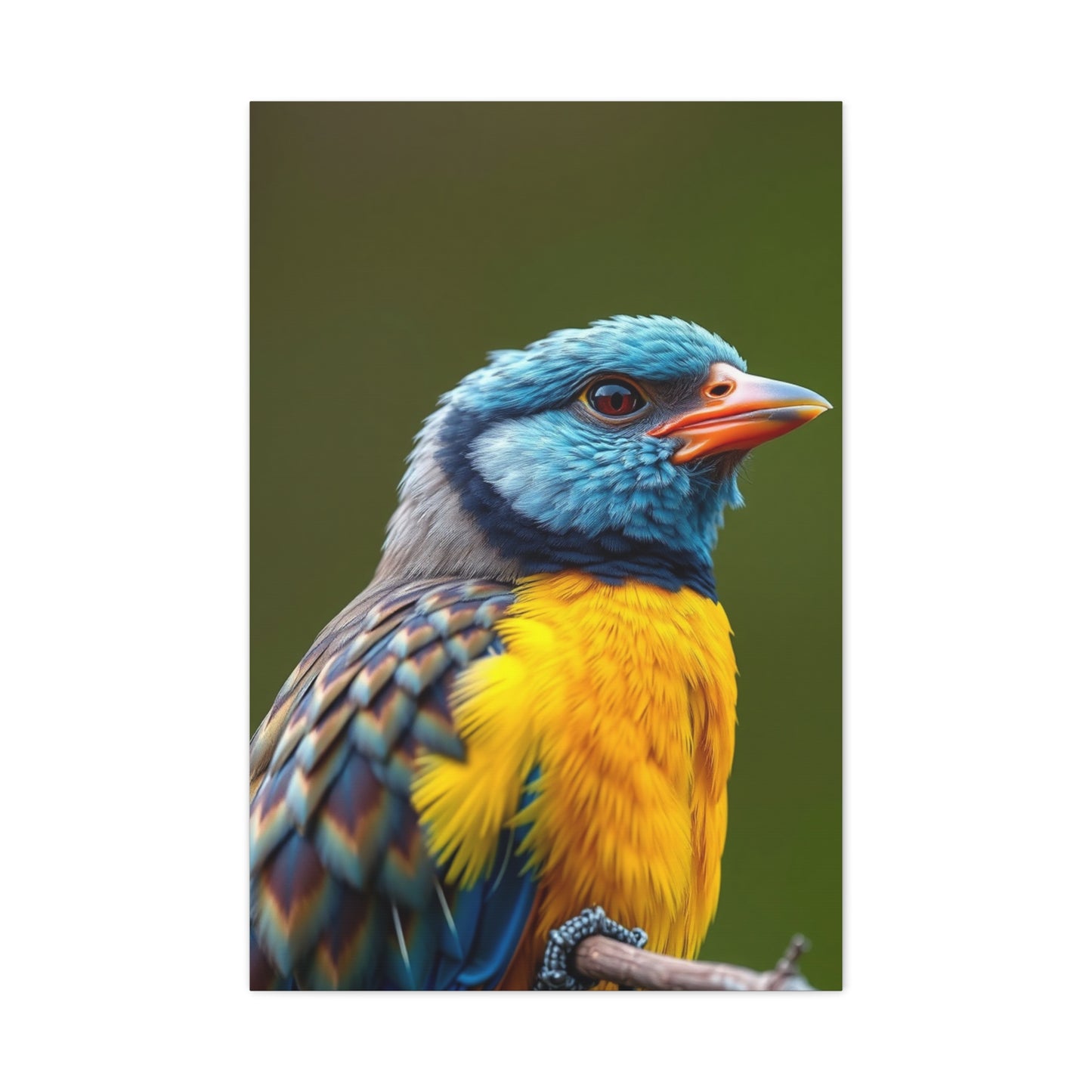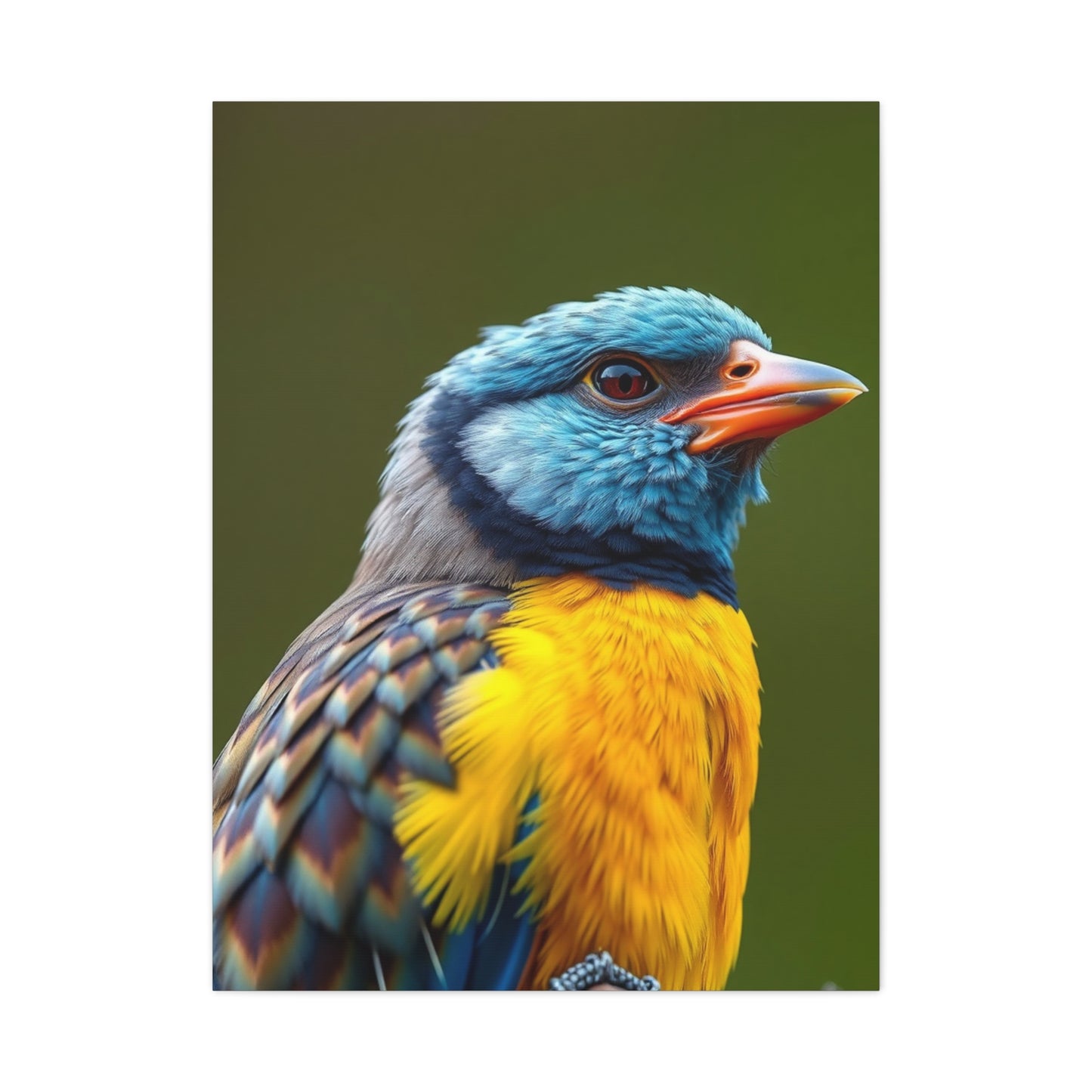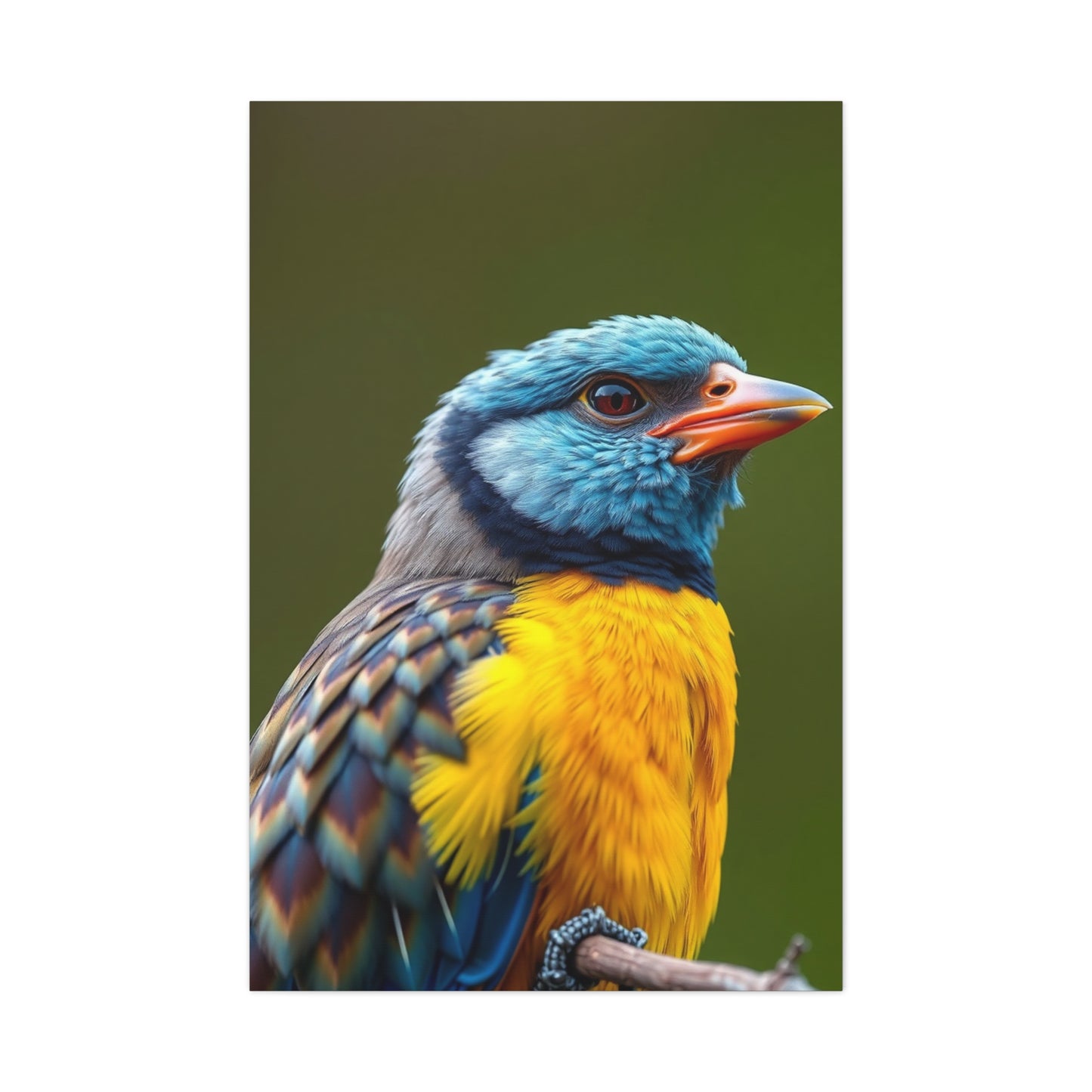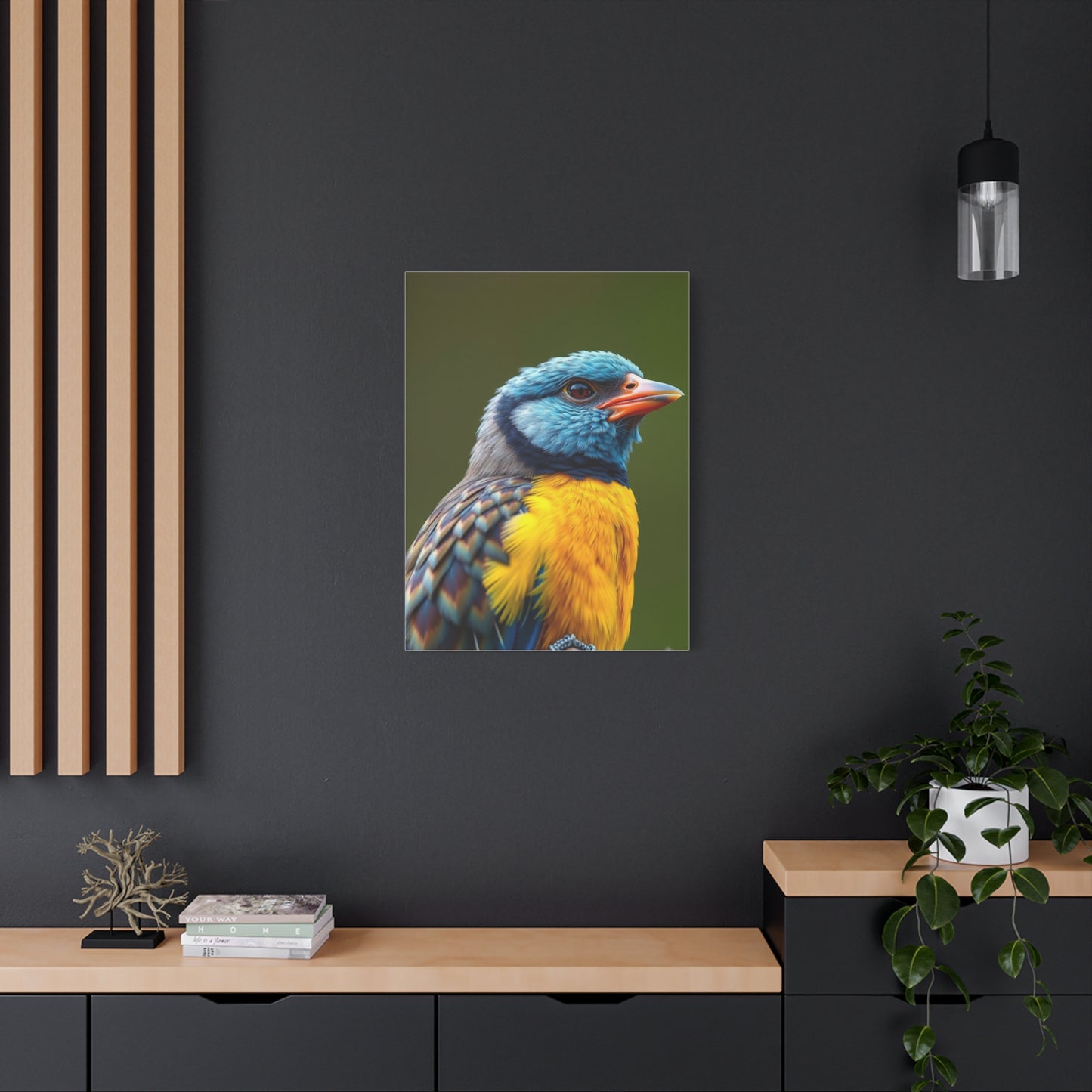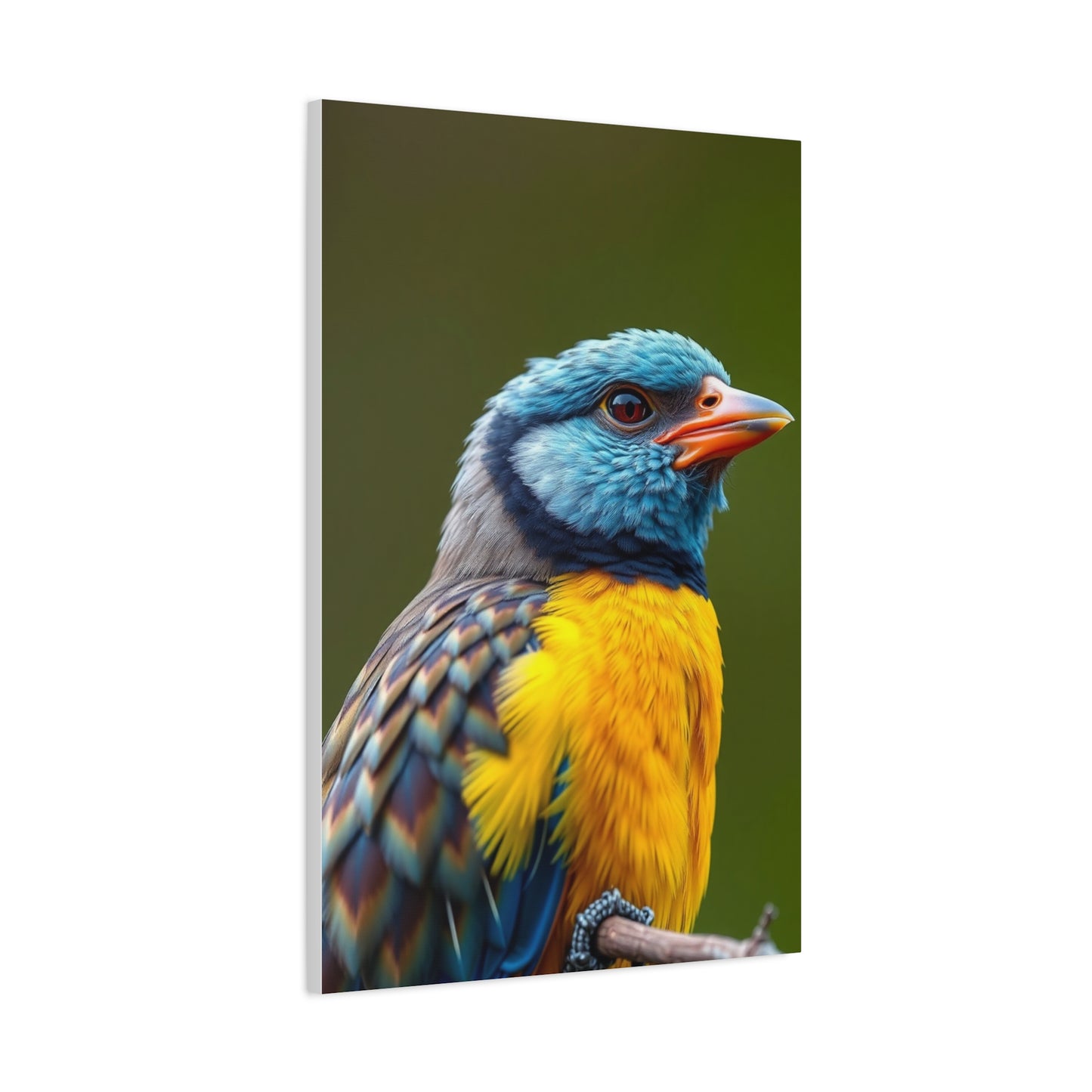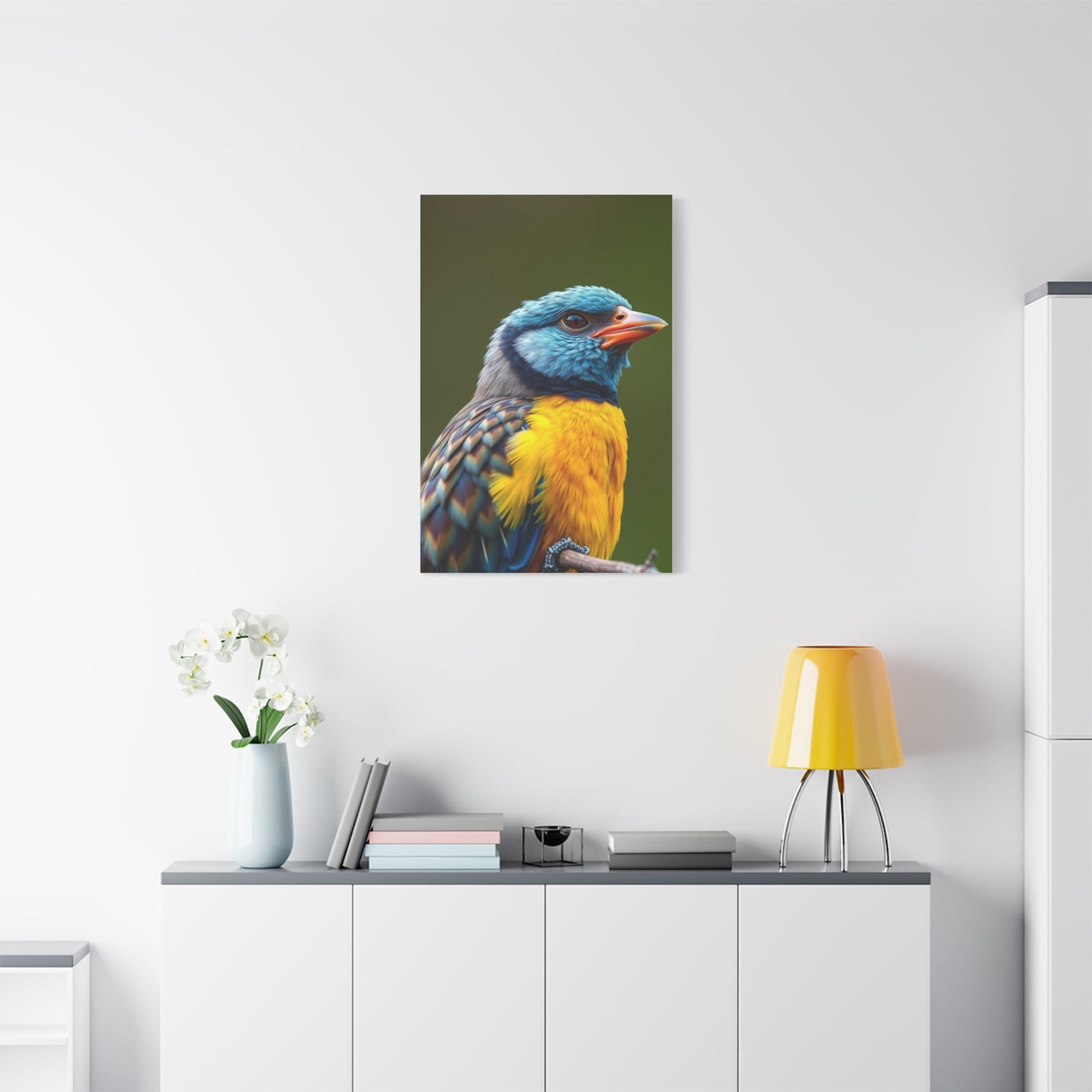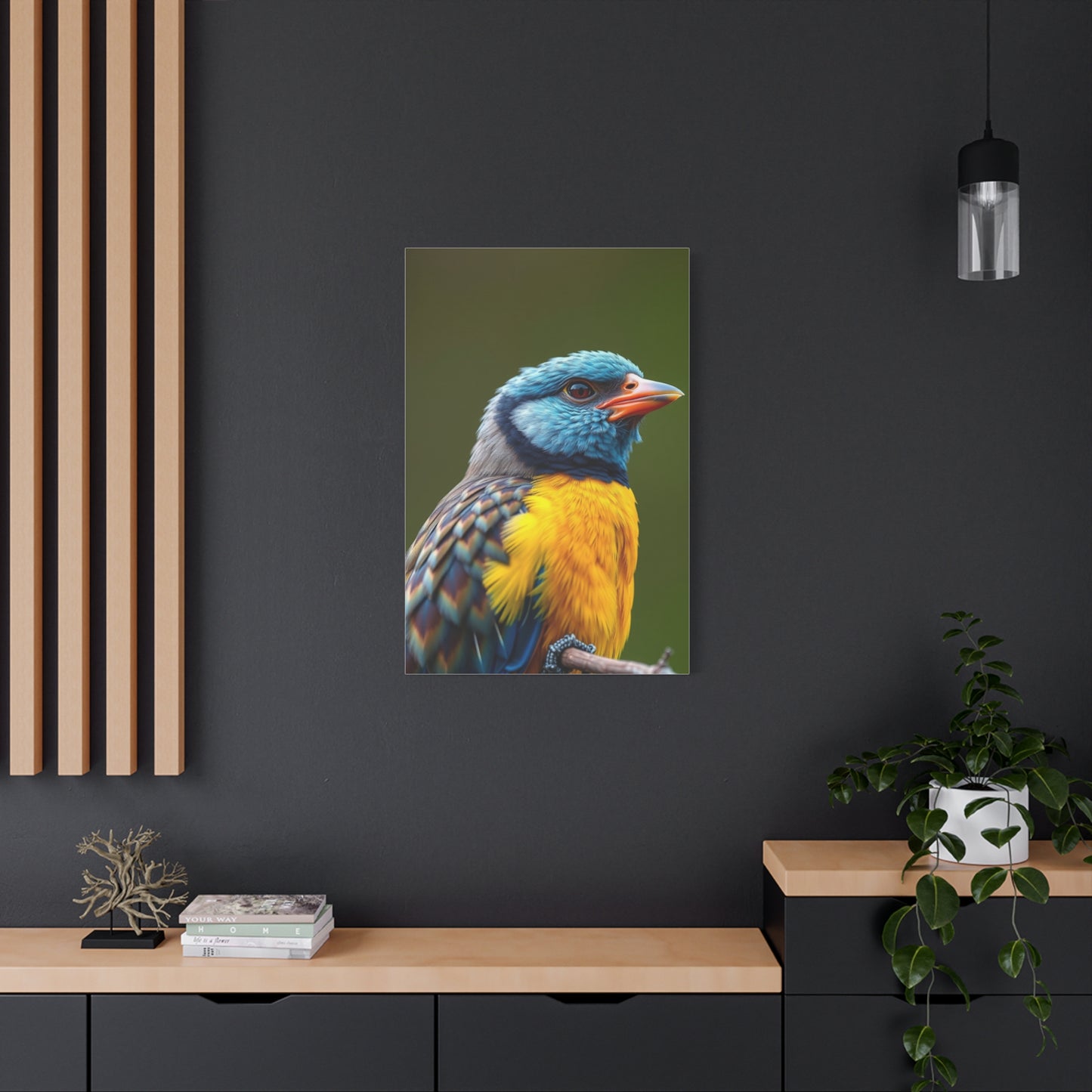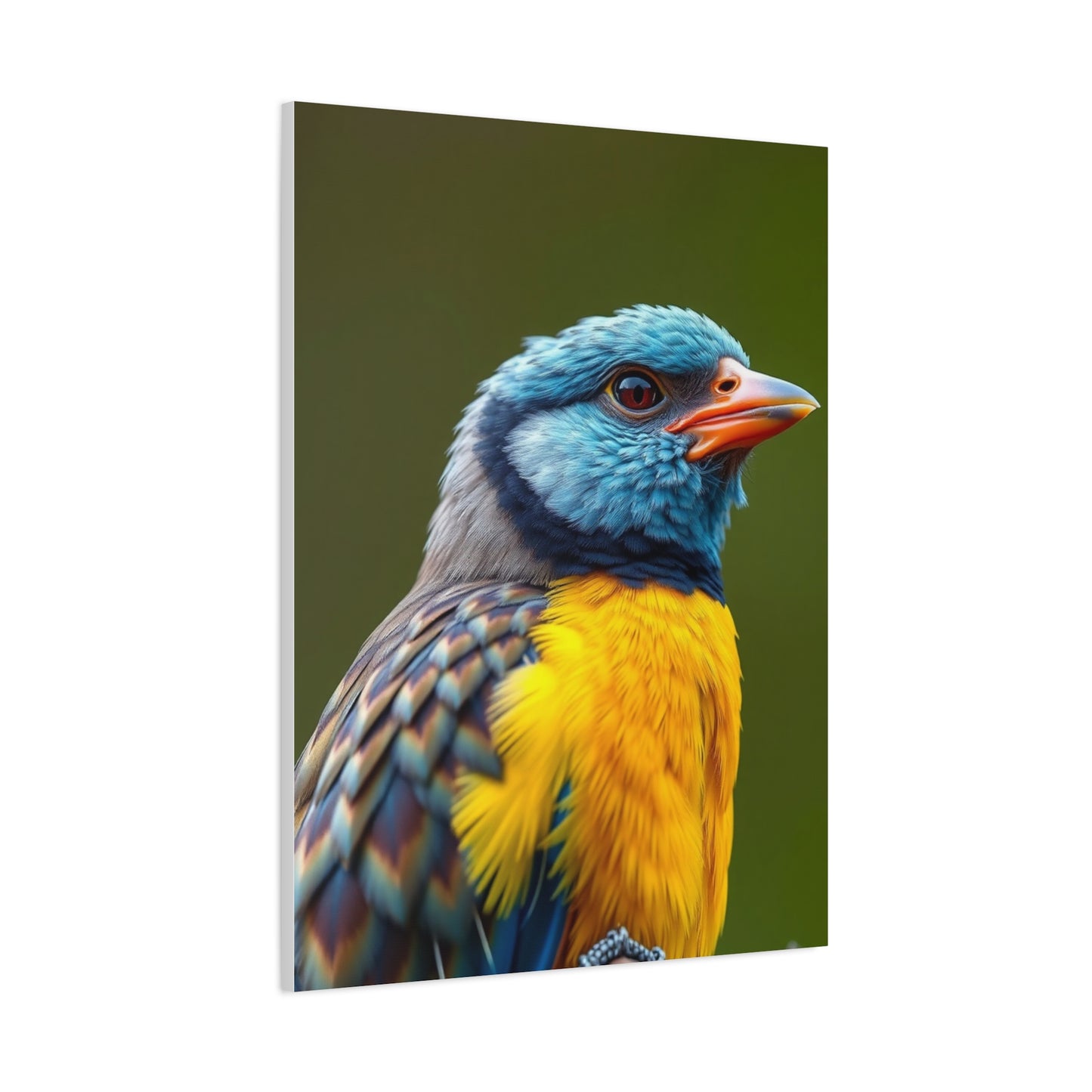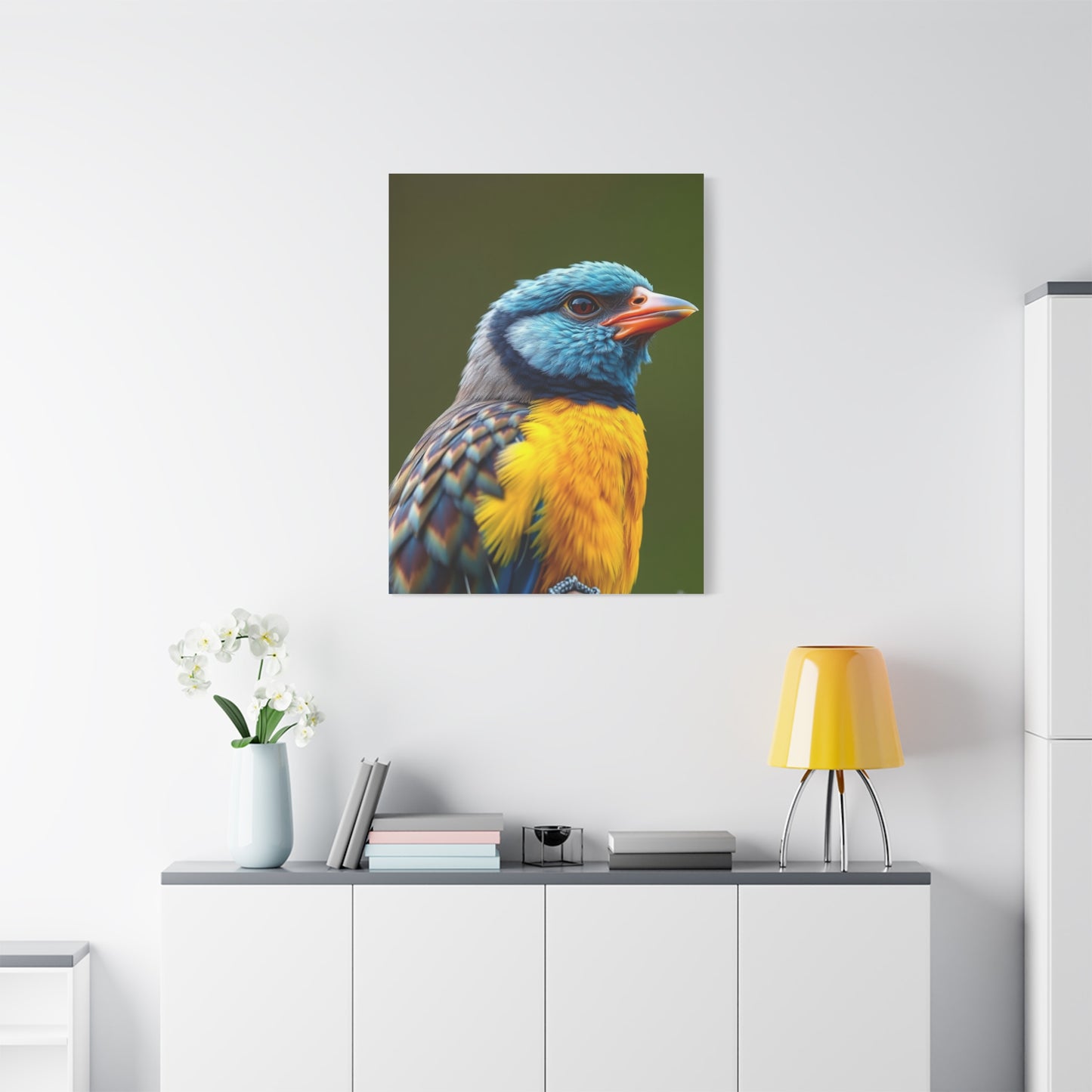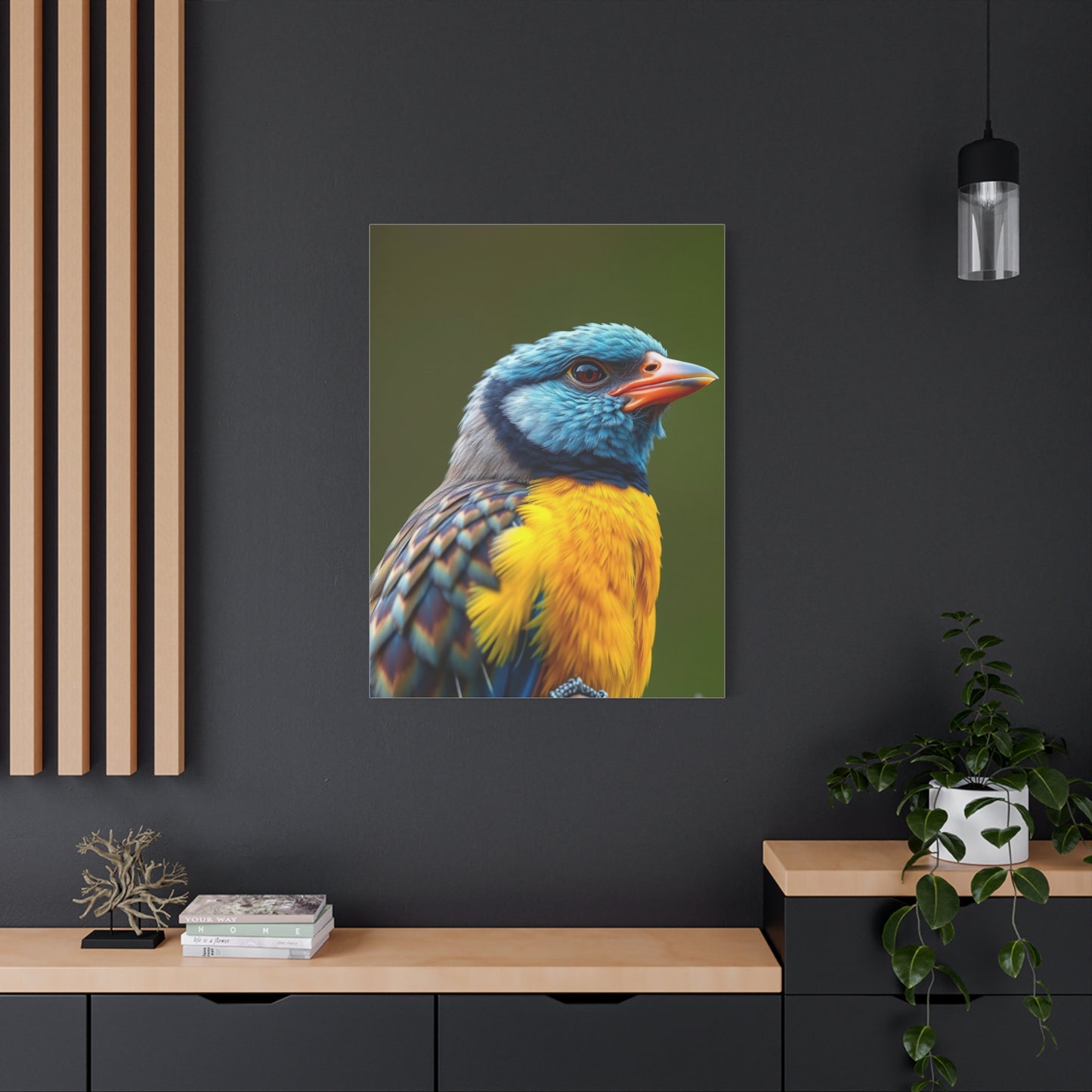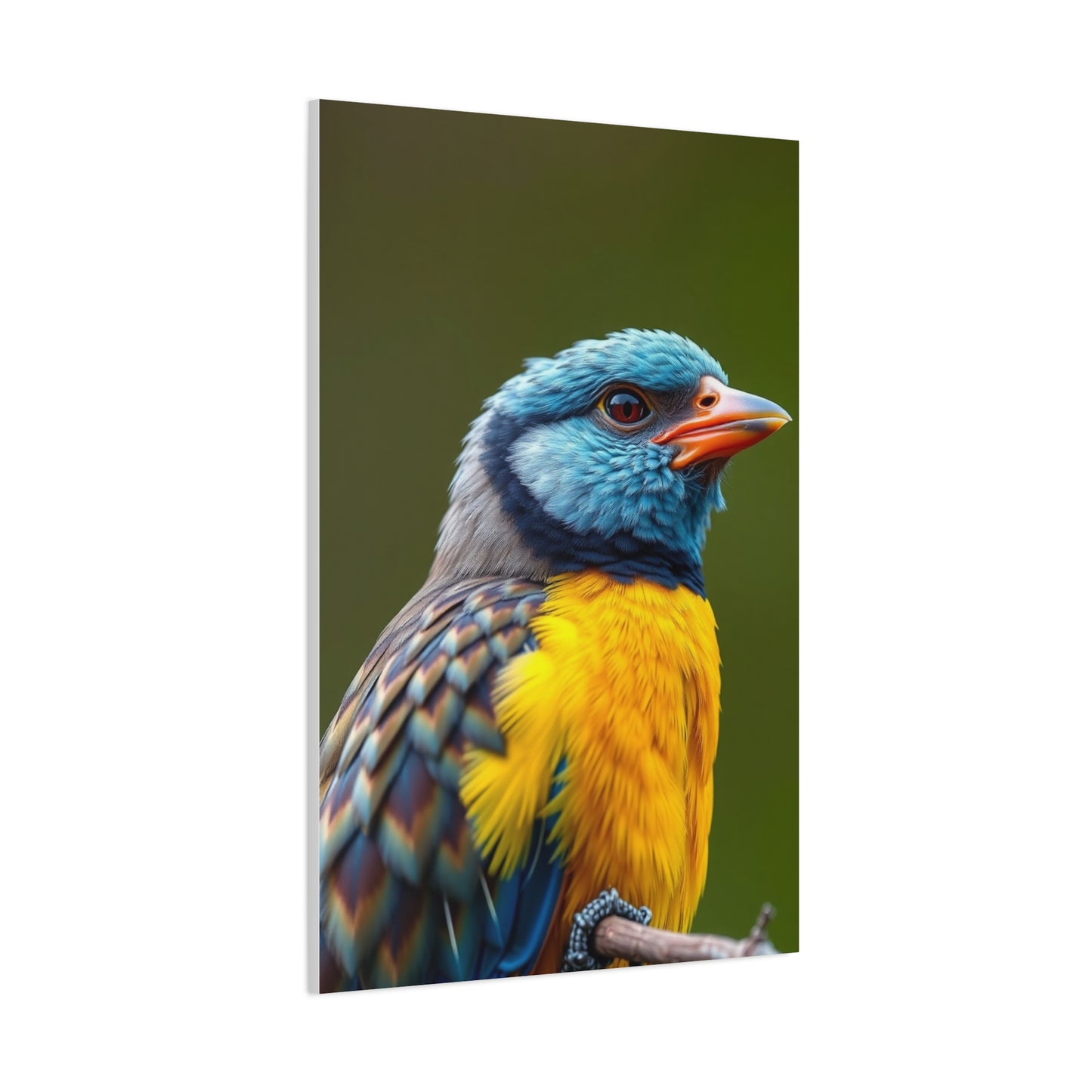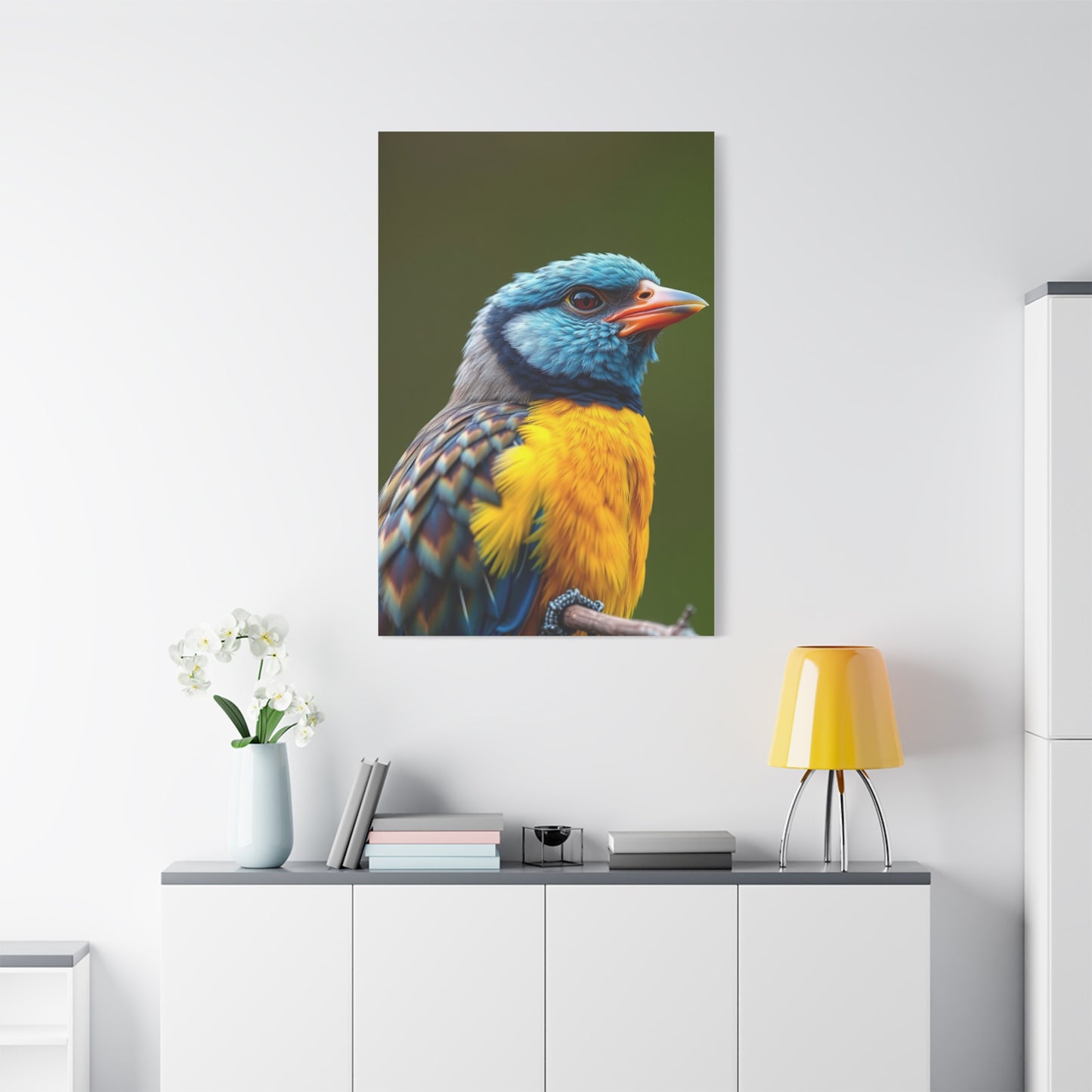Celestial Flock Imagery Wall Art: Transforming Spaces with Ethereal Bird-Inspired Designs
The intersection of celestial themes and avian imagery has emerged as one of the most captivating trends in contemporary interior design. When we explore the realm of decorative wall pieces featuring birds set against cosmic backdrops, we discover a unique artistic category that bridges the earthly and the divine. This comprehensive guide delves into every aspect of incorporating these magnificent artistic expressions into your living spaces, offering insights into selection, placement, and the transformative power these pieces hold.
Bedrooms with Bird-Inspired Décor
Bird-inspired décor offers a unique way to transform bedrooms into serene and uplifting spaces. Birds, with their associations of freedom, flight, and tranquility, naturally evoke a sense of calm, making them ideal motifs for restful areas. By integrating bird-inspired wall art, bedding, or accent pieces, you can create a visually appealing bedroom that also promotes relaxation and positive energy.When considering wall art, flocks of birds in motion work exceptionally well. A canvas depicting birds soaring across a soft sunrise or twilight sky adds depth and dimension, turning a plain wall into a dynamic focal point. Minimalist silhouettes of birds in black or metallic finishes can complement neutral or pastel color palettes, maintaining an elegant, modern aesthetic.
Beyond wall art, bird motifs can appear in textiles and furniture accents. For example, throw pillows, bed linens, or rugs featuring subtle bird patterns can harmonize with wall décor, creating cohesion. Lamps or ornaments shaped like birds can add a whimsical or sophisticated touch depending on the style.Placement is key to maximizing impact. Above the headboard is a classic choice for larger canvases, creating a sense of upward motion as the birds appear to fly toward the ceiling. Smaller clusters or decals can decorate corners or shelves, adding movement without overwhelming the room.
Lighting can enhance the effect of bird-inspired décor. Soft, indirect lighting emphasizes the silhouette and texture of the artwork, while natural light highlights metallic or reflective finishes, creating a subtle shimmer reminiscent of feathers in flight.Color schemes should harmonize with the room’s overall design. Soft blues, gentle pinks, or muted grays evoke calm and tranquility, while metallic accents add sophistication and visual interest. A monochromatic approach can maintain simplicity, while layered shades of the same color create depth and dimension.
Flocks in Flight: Symbolism in Wall Art
Flocks of birds in flight are among the most evocative motifs in wall art. They symbolize freedom, unity, and the pursuit of higher perspectives, offering both visual appeal and deep emotional resonance. Incorporating this imagery into your home décor can transform walls into expressive narratives, where movement and meaning coexist harmoniously.The symbolism of birds in flight extends across cultures. In many traditions, they represent the soul, spiritual growth, and transcendence. A flock, rather than a single bird, emphasizes community, cooperation, and collective journeys.
Displaying such motifs in a living space reminds inhabitants of personal growth, exploration, and connection with nature.Visually, flocks in flight introduce motion and rhythm into interiors. Artists often arrange birds in arcs, diagonals, or staggered patterns, guiding the viewer’s eye across the wall. This creates a dynamic and immersive experience, particularly effective on large blank walls in living rooms or hallways. The contrast of dark silhouettes against a light or colorful background enhances depth and spatial perception.
Materials vary from canvas prints to metal sculptures and layered acrylic installations. Canvas prints allow for rich textures and painterly effects, while metallic or resin-based birds create a three-dimensional presence, casting shadows that add life to the artwork. Decals and vinyl options offer flexibility and are ideal for temporary installations or rental spaces.Color choices are critical for conveying symbolism. Dark silhouettes on a light background suggest freedom and clarity, while vibrant skies evoke energy, optimism, and vitality. Pastel gradients enhance calm and serenity, making them suitable for bedrooms or meditation spaces. Metallic accents can convey elegance and sophistication.
Placement enhances the artwork’s symbolic impact. Positioning birds ascending diagonally conveys growth and aspiration, while horizontal arrangements emphasize continuity and harmony. Thoughtful lighting accentuates shadows and textures, amplifying the perception of movement.In conclusion, flocks in flight offer more than decoration—they infuse spaces with narrative, motion, and symbolic depth. By selecting the right design, material, and placement, homeowners can create a visually striking environment that resonates emotionally, reminding us of freedom, unity, and the limitless potential embodied by birds in flight.
Metallic Bird Wall Sculptures for Modern Homes
Metallic bird wall sculptures are increasingly popular in modern interior design due to their ability to combine artistry, texture, and sophistication. Unlike traditional flat prints, metallic sculptures add depth and dimensionality, allowing birds to appear as if they are taking flight from the wall itself.These sculptures are ideal for contemporary homes, where sleek lines, clean surfaces, and subtle textures dominate. They bring motion and elegance into otherwise static spaces. The reflective quality of metals such as gold, bronze, or brushed steel enhances light play, creating dynamic visuals as natural or artificial light interacts with the surfaces.
One major advantage of metallic sculptures is their versatility in scale and arrangement. Small birds can be grouped in clusters for intimate spaces like hallways or bedrooms, while larger installations serve as dramatic focal points in living rooms, dining areas, or above fireplaces. The arrangement of birds—ascending, arcing, or scattering—affects the room’s perceived energy and movement.Materials are not limited to pure metals; many sculptures incorporate mixed media, including wood, acrylic, or resin, for a layered effect. This adds texture and complexity, creating an interactive visual experience. High-quality finishes ensure durability and longevity, important for long-term installations.
Color and finish choices can dramatically influence mood. Brushed gold or silver conveys luxury, elegance, and warmth, while darker metals offer a contemporary, industrial vibe. Some designs feature gradient or iridescent surfaces, adding an ethereal quality reminiscent of birds catching the light mid-flight.Placement is key. Metallic birds look striking above furniture pieces, across blank walls, or as part of a gallery-style arrangement. Lighting enhances their sculptural qualities; strategically placed spotlights or ambient light can cast moving shadows, giving the impression of motion.
Maintenance is straightforward, requiring only occasional dusting and gentle cleaning to preserve sheen. Unlike prints or canvas, these sculptures are long-lasting and resistant to fading, making them ideal for high-traffic areas.In conclusion, metallic bird wall sculptures merge artistry with functional décor, transforming modern homes into dynamic and elegant spaces. Their reflective surfaces, three-dimensional presence, and customizable arrangements allow homeowners to introduce movement, sophistication, and a symbolic sense of freedom into their interiors.
Profound Symbolism Behind Bird and Sky Combinations
The pairing of winged creatures with heavenly elements carries deep symbolic resonance across numerous cultures and spiritual traditions. Birds have historically represented freedom, transcendence, and the human soul's journey toward enlightenment. When artists combine these natural beings with stars, moons, and cosmic elements, they create visual narratives that speak to our innate desire for connection with something greater than ourselves.
Throughout history, civilizations have looked to the skies and observed migratory patterns of birds as omens and messages from the divine. Ancient Egyptian hieroglyphs frequently depicted the soul as a bird with a human head, soaring toward the afterlife. In many Indigenous cultures, birds serve as messengers between the physical world and the spirit realm. The addition of celestial components amplifies this symbolism, suggesting that our earthly experiences are intrinsically linked to universal patterns and cosmic rhythms.
Contemporary artists who work with these themes often draw upon this rich symbolic vocabulary while adding their own interpretive layers. A flock moving across a starlit canvas might represent collective consciousness, the power of community, or the beauty found in synchronized movement. The contrast between the solid forms of birds and the ethereal quality of cosmic backgrounds creates visual tension that invites contemplation and emotional engagement.
Evolution of Avian Art in Decorative Traditions
The depiction of birds in visual art traces back to prehistoric cave paintings, where early humans captured the essence of these creatures with remarkable accuracy and artistic sensitivity. As civilizations developed, bird imagery became increasingly sophisticated and symbolically charged. Medieval illuminated manuscripts featured elaborate marginalia with intricate bird designs, while Asian ink paintings elevated the depiction of cranes, sparrows, and phoenixes to high art forms.
The Victorian era witnessed an explosion of ornithological interest, with artists creating detailed scientific illustrations that were also aesthetically pleasing. This period established many conventions for depicting birds that contemporary artists still reference. The Arts and Crafts movement incorporated stylized bird motifs into textiles, wallpapers, and decorative panels, demonstrating how these creatures could enhance domestic environments.
Modern interpretations have expanded dramatically, incorporating abstract approaches, digital techniques, and mixed media applications. Today's creators blend traditional methods with innovative technologies, producing works that range from photorealistic renderings to highly abstracted representations. The addition of cosmic elements represents a relatively recent development, reflecting contemporary fascination with space exploration and our place within the universe.
Exploring Different Artistic Styles and Approaches
The world of bird-themed cosmic artwork encompasses an impressive range of artistic styles, each offering distinct aesthetic qualities and emotional impacts. Realistic approaches capture anatomical precision and natural behaviors, presenting birds in scientifically accurate detail against dramatically rendered night skies. These pieces appeal to nature enthusiasts and those who appreciate technical mastery in art.
Impressionistic interpretations dissolve boundaries between subject and background, using color and brushwork to convey the essence of flight and the atmospheric quality of twilight or starlit scenes. This style evokes emotion through suggestion rather than explicit detail, creating dreamlike compositions that stimulate imagination. The soft edges and luminous quality characteristic of impressionist work make these pieces particularly effective in creating calming, meditative spaces.
Abstract and geometric approaches deconstruct bird forms into fundamental shapes and patterns, often incorporating sacred geometry or mathematical principles observed in both nature and cosmos. These sophisticated designs appeal to viewers who appreciate conceptual depth and visual complexity. Minimalist variations reduce compositions to essential elements, creating powerful statements through restraint and careful consideration of negative space.
Contemporary digital art has introduced entirely new possibilities, allowing artists to create surreal combinations impossible in traditional media. Layered compositions might feature transparent or translucent birds hovering over nebulae, galaxies, or abstract cosmic patterns. These works often incorporate unexpected color palettes and lighting effects that push beyond naturalistic representation into visionary territory.
Cosmic Skies and Flying Flocks
Combining the motif of birds in flight with cosmic skies produces a visually stunning and spiritually evocative style of wall art. Flying flocks against celestial backgrounds capture both movement and mystery, creating a sense of wonder and freedom in any space. These designs often feature birds soaring through starry nights, glowing moons, or gradient skies inspired by dawn and dusk, blending natural and cosmic elements in harmony.This style works exceptionally well in living rooms, bedrooms, and meditation corners. In a bedroom, birds flying across a soft twilight canvas can evoke calm and encourage relaxation. In common areas, such as the living room, the dynamic movement of a flock against a vibrant sky adds energy and sophistication, creating a natural conversation starter.The symbolism behind this theme is profound. Birds represent freedom, perspective, and the soul’s journey, while celestial elements like stars and moons symbolize infinity, dreams, and inspiration.
Together, they communicate a narrative of transcendence and limitless possibility, making these artworks not just decorative, but emotionally resonant.When choosing cosmic sky wall art, consider size and placement carefully. Large canvases work best as focal points on main walls, while smaller prints can enhance corners or corridors, guiding visual flow. Horizontal arrangements emphasize expansiveness, while diagonal arcs convey upward movement, inspiring a sense of elevation.Materials range from traditional canvas prints to 3D metal or acrylic designs. Canvas provides softness and texture, while metallic or layered acrylic options add depth and reflective qualities. High-quality prints with vibrant inks ensure that cosmic elements, like stars and glowing moons, retain their luminosity over time.
Color palettes are essential for creating mood. Deep blues, purples, and black convey mystery and calm, while pastel skies evoke tranquility and warmth. Gold or silver metallic birds can add contrast and elegance, making the flock appear as if illuminated by celestial light.In conclusion, cosmic skies and flying flocks combine artistry, symbolism, and emotion, transforming ordinary walls into evocative narratives of freedom and wonder. By integrating this design thoughtfully, homeowners can create spaces that inspire, soothe, and captivate, blending the beauty of nature with the vastness of the cosmos.
Emotional Impact in Bird-Themed Designs
Color selection plays a crucial role in determining how bird and sky artwork affects viewers emotionally and psychologically. Deep blues and purples commonly associated with night skies tend to evoke feelings of calm, introspection, and mystery. These cooler tones can make rooms feel more spacious and serene, making them excellent choices for bedrooms and meditation spaces.
Warmer palettes featuring golds, oranges, and pinks suggest dawn or dusk scenes, bringing energy and optimism to interiors. These colors stimulate creativity and social interaction, making them appropriate for common areas, studios, and workspaces. The contrast between warm-colored birds and cool cosmic backgrounds creates visual excitement while maintaining overall harmony.
Metallic accents in silver, gold, or copper add dimension and luxury to these compositions. Reflective elements catch and redirect light throughout the day, creating dynamic viewing experiences that change with lighting conditions. This interactive quality keeps artwork feeling fresh and engaging over extended periods.
Monochromatic schemes focusing on variations of single hues create sophisticated, cohesive looks that integrate easily with diverse interior styles. Black and white compositions emphasize form, texture, and contrast, producing dramatic statements with timeless appeal. These works prove particularly effective in minimalist or contemporary settings where color restraint is valued.
Material Considerations for Different Display Environments
The physical materials and production methods used to create bird-themed cosmic artwork significantly impact their appearance, durability, and suitability for various spaces. Traditional canvas prints offer texture and depth, with visible weave adding tactile interest. High-quality canvas stretched over wooden frames provides a classic presentation that works well in most residential settings.
Metal prints have gained popularity for their vibrant color reproduction and contemporary aesthetic. The process of infusing dyes directly into specially coated aluminum creates images with remarkable clarity and luminosity. These pieces resist fading and moisture damage, making them suitable for bathrooms, kitchens, and other challenging environments. The smooth, reflective surface adds modern sophistication to bird and sky imagery.
Acrylic and glass mounting techniques create floating, frameless presentations with stunning depth and clarity. Light passing through transparent substrates enhances luminosity, particularly effective for cosmic themes where glow and radiance contribute significantly to impact. These premium options make dramatic focal points in contemporary interiors.
Wood panel substrates bring organic warmth to digital and printed imagery. The natural grain visible through certain printing processes creates interesting textural interplay with bird subjects. Reclaimed or distressed wood adds rustic character, while smooth, sealed surfaces provide refined elegance.
Paper-based fine art prints remain the standard for limited edition and collectible works. Various paper types from smooth hot-press to textured cold-press watercolor stock offer different aesthetic qualities. Archival papers and pigment-based inks ensure longevity, important for investment-grade pieces. These works typically require framing with protective glazing to prevent damage from environmental factors.
Strategic Placement for Maximum Visual and Emotional Impact
Thoughtful placement of bird and cosmic sky artwork can transform the energy and functionality of interior spaces. The location you choose should consider viewing angles, lighting conditions, and the intended emotional effect. Large-scale pieces work best as focal points on primary walls, drawing attention immediately upon entering a room.
In living rooms, positioning artwork above seating arrangements creates natural viewing opportunities during conversation and relaxation. The height should allow comfortable viewing from both standing and seated positions, with the center of the piece typically placed at eye level. For arrangements above sofas or consoles, leaving appropriate space between furniture and artwork prevents cramped appearances.
Bedroom placement should prioritize calming effects and personal connection. Many people prefer positioning significant artwork opposite the bed for morning and evening contemplation, though pieces above headboards create intimate sanctuary feelings. The soothing qualities of bird and sky imagery make these works particularly appropriate for sleep environments.
Dining areas benefit from artwork that stimulates conversation without overwhelming the space. Birds in flight across cosmic backgrounds can suggest gathering, journey, or transformation, themes that complement the communal nature of shared meals. Proper lighting ensures the artwork remains visible during evening dining without creating glare.
Hallways and transitional spaces offer opportunities for creating gallery-style presentations. Series of related pieces featuring different bird species or celestial scenes can guide movement through homes while maintaining cohesive design narratives. These locations allow for more experimental or bold choices since viewing time is typically brief.
Office and workspace environments gain inspiration and aspiration from imagery suggesting flight and limitless possibility. Positioning artwork within the natural sightline when looking up from desk work provides mental breaks and visual relief from screen fatigue. The expansive quality of cosmic scenes can help combat feelings of confinement common in home offices.
Creating Cohesive Multi-Piece Installations
Grouping multiple works featuring bird and celestial themes creates powerful visual statements with greater impact than individual pieces. Successful installations require careful consideration of relationships between pieces, including color harmonies, compositional flow, and thematic connections. The arrangement should guide the eye naturally across the collection while allowing each work to maintain individual integrity.
Triptych and polyptych formats spread single compositions across multiple panels, creating seamless panoramic effects. Birds appearing to fly from one panel to the next generate movement and dynamism, while cosmic backgrounds provide continuity. These formats work particularly well above long furniture pieces or in wide wall spaces.
Gallery walls mixing various sizes and formats offer flexibility and personalization. Combining bird-focused pieces with complementary abstract cosmic works, constellation maps, or nature photography creates layered narratives. Maintaining consistent color palettes or framing styles helps diverse elements cohere visually. Planning layouts on paper or using temporary templates ensures satisfying arrangements before committing to wall mounting.
Vertical stacking of horizontal pieces creates column-like installations that draw eyes upward, emphasizing ceiling height and creating impressions of ascension. This arrangement style suits narrow wall spaces and can make rooms feel more spacious. The upward movement inherent in bird flight makes this orientation particularly appropriate for avian subjects.
Asymmetrical arrangements introduce visual interest and contemporary sensibility. Clustering smaller pieces around larger anchoring works creates balance through weight distribution rather than formal symmetry. This approach allows for organic growth of collections over time as new pieces are added.
Lighting Techniques to Enhance Cosmic and Avian Elements
Proper illumination dramatically affects how bird and sky artwork is perceived and appreciated. Natural daylight reveals truest colors but varies throughout the day and seasons. Positioning artwork to receive indirect natural light prevents fading while ensuring visibility. North-facing walls receive consistent illumination without harsh direct sun in northern hemisphere locations.
Artificial lighting offers control and consistency, with several approaches serving different purposes. Track lighting with adjustable heads allows precise direction of light onto artwork while minimizing glare. LED fixtures provide energy efficiency and minimal heat output, protecting delicate materials. Color temperature selection influences mood, with warmer tones creating intimate atmospheres and cooler temperatures emphasizing clarity and detail.
Picture lights mounted above or below frames focus attention specifically on artwork while creating dramatic effects. These dedicated fixtures work particularly well for featured pieces in collections. Modern slim-profile LED picture lights provide illumination without bulky hardware that might distract from artwork.
Accent lighting from floor or table lamps positioned to wash across artwork creates ambient effects suitable for evening viewing. The interplay between direct and reflected light adds depth and dimension to textured surfaces. Dimmer controls allow adjustment for different activities and times of day.
Backlighting techniques, particularly effective with translucent materials like acrylic or glass, create stunning luminous effects perfect for cosmic themes. LED light panels or strips behind artwork make stars and nebulae appear to glow, adding magical quality to bird silhouettes. This approach transforms artwork into active light sources that contribute to overall room illumination.
Integrating Artwork with Various Interior Design Styles
Bird and cosmic sky imagery adapts remarkably well to diverse decorating approaches, from traditional to ultra-modern. Understanding how to harmonize these pieces with existing design vocabularies ensures cohesive, intentional-looking spaces. The key lies in selecting appropriate styles, colors, and framing treatments that complement rather than clash with surrounding elements.
Contemporary minimalist interiors benefit from clean-lined presentations with simple floating frames or frameless mounting. Artwork featuring generous negative space and limited color palettes reinforces the less-is-more philosophy. Monochromatic or near-monochromatic bird compositions against expansive cosmic backgrounds provide visual interest without cluttering the aesthetic.
Industrial spaces characterized by exposed brick, metal, and concrete gain warmth and soul from organic bird imagery. The contrast between hard architectural elements and fluid avian forms creates satisfying visual balance. Metal prints and weathered wood substrates complement industrial materials while introducing natural themes.
Scandinavian design's emphasis on natural elements, light, and simplicity pairs beautifully with understated bird compositions. Muted color palettes, clean compositions, and focus on craftsmanship align with Nordic sensibilities. Natural wood frames and organic imagery reinforce connections to nature central to this aesthetic.
Bohemian eclectic styles embrace the rich symbolism and varied artistic approaches available in this category. Layering multiple bird and cosmic pieces with other meaningful artwork, textiles, and collected objects creates personalized, soul-filled spaces. Vibrant colors, mixed media approaches, and unconventional arrangements suit this free-spirited aesthetic.
Traditional and transitional interiors accommodate bird imagery through classic framing treatments and more representational artistic approaches. Realistic renderings or vintage-inspired illustrations in ornate frames honor conventional decorating principles while introducing fresh subjects. Coordinating artwork colors with existing palette schemes ensures integration with established schemes.
Seasonal and Occasion-Based Display Strategies
Rotating artwork seasonally keeps interiors feeling fresh and responsive to natural cycles. Bird and celestial themes lend themselves particularly well to this practice, with imagery that can evoke different seasons and moods. Creating collections that reflect various times of year allows you to transform spaces without major redecorating efforts.
Spring collections might feature smaller songbirds emerging against dawn skies, suggesting renewal and awakening. Pastel palettes and fresh, light compositions align with seasonal energy. Imagery showing birds gathering nesting materials or returning from migration reinforces themes of new beginnings.
Summer selections can emphasize freedom and abundance with birds soaring across expansive daylit or twilight skies. Warmer color schemes and dynamic compositions capture the energy of this vital season. Coastal bird species against ocean horizons bring vacation and relaxation associations.
Autumn displays featuring migratory flocks against harvest moons or star-filled skies evoke transition and gathering. Deeper, richer colors in golds, oranges, and burgundies reflect changing foliage. These pieces carry introspective qualities appropriate for the contemplative season.
Winter imagery showcasing birds against snowy twilight or brilliant starry skies creates serene, crystalline atmospheres. Cool color palettes with silver and white accents capture the season's clarity. Imagery of birds enduring winter speaks to resilience and quiet strength.
Special occasions and celebrations offer opportunities for temporary displays. Artwork can be selected to reflect personal milestones, seasonal holidays, or cultural observances. This flexibility allows bird and cosmic imagery to participate actively in the rhythms of household life.
Caring for and Maintaining Your Collection
Proper maintenance ensures bird and cosmic sky artwork remains beautiful for years or even generations. Different materials require specific care approaches, but some general principles apply across categories. Regular attention prevents minor issues from becoming serious damage.
Dust accumulation dulls colors and obscures details over time. Gentle cleaning with soft, lint-free cloths removes surface dust from frames and glazing. Microfiber materials work particularly well for capturing particles without scratching. Avoid spraying cleaning products directly onto artwork; instead, slightly dampen cloths for stubborn spots on glass or acrylic glazing.
Environmental controls protect against the primary threats of light, humidity, and temperature fluctuations. UV-filtering glazing or protective coatings shield against photodegradation that fades colors and weakens materials. Maintaining stable humidity between forty and sixty percent prevents warping, mold growth, and material breakdown. Avoid hanging artwork near heating vents, air conditioners, or exterior walls subject to temperature extremes.
Inspection routines allow early detection of issues requiring professional attention. Examine pieces periodically for signs of fading, discoloration, material separation, or pest damage. Addressing problems promptly minimizes restoration costs and preserves value.
Professional cleaning and conservation services should handle valuable, delicate, or damaged pieces. Trained conservators understand how different materials and techniques require specialized approaches. For investment-grade artwork, establishing relationships with reputable conservation professionals provides peace of mind.
Storage of seasonal or rotated pieces requires careful preparation. Clean artwork thoroughly before storage, wrap in acid-free materials, and store flat in climate-controlled environments away from potential water damage or pest access. Proper storage maintains condition during periods not on display.
Commissioning Custom Bird and Cosmic Sky Artwork
Custom commissions allow you to obtain completely unique pieces tailored precisely to your vision, space, and preferences. Working directly with artists creates collaborative relationships and results in artwork with personal significance beyond mass-produced alternatives. Understanding the commission process helps ensure satisfying outcomes.
Finding appropriate artists begins with researching creators whose existing work resonates with your aesthetic preferences. Online portfolios, art fairs, gallery exhibitions, and artist directories provide access to numerous possibilities. Social media platforms have become valuable resources for discovering emerging talents working in specific styles or themes.
Initial consultations establish parameters including subject matter, size, colors, and overall vision. Provide reference images, color samples, and descriptions of the intended space to help artists understand your goals. Discuss timeline expectations, pricing structure, and revision policies. Clear communication at this stage prevents misunderstandings later.
Many artists provide preliminary sketches or digital mockups for approval before proceeding with final works. This stage allows refinement of composition, color schemes, and specific details. Providing feedback thoughtfully and specifically helps artists understand your preferences without micromanaging their creative process.
Pricing for custom work reflects artists' experience, reputation, materials, size, and complexity. Understanding factors that influence costs helps establish realistic budgets. Custom pieces typically require deposits before work begins, with remaining balance due upon completion or delivery.
Documentation including contracts, certificates of authenticity, and care instructions protects both parties and establishes provenance. Maintain these records carefully for insurance, resale, or estate purposes. High-quality photographs document artwork in your collection for these same purposes.
Investment Potential and Collecting Strategies
While aesthetic enjoyment should remain primary motivation for acquiring bird and cosmic sky artwork, understanding market dynamics benefits collectors building significant holdings. Certain factors influence whether pieces appreciate in value over time, and informed collecting strategies can yield both personal satisfaction and financial returns.
Artist reputation and career trajectory significantly impact artwork value. Emerging artists with growing recognition often offer entry points for collectors before prices rise substantially. Established artists with exhibition histories, critical acclaim, and institutional collection placements command higher prices with more stable markets.
Limited editions and artist proofs maintain value better than open-edition prints. Understanding production numbers, edition structure, and documentation helps assess rarity. Signed and numbered pieces typically hold value better than unsigned versions of the same image.
Condition dramatically affects value, making proper care essential for investment pieces. Original, unaltered works in excellent condition command premiums over damaged or poorly restored examples. Professional restoration can recover value but rarely returns pieces to pristine original market positions.
Provenance and exhibition history add significance and value. Pieces shown in major exhibitions, published in books or catalogs, or held in notable collections carry enhanced prestige. Maintaining documentation of your pieces' histories contributes to their future value.
Market trends in subject matter, style, and artist recognition fluctuate over time. While following trends offers short-term opportunities, acquiring work you genuinely appreciate provides satisfaction regardless of market performance. Balancing aesthetic preferences with investment considerations creates personally meaningful collections with potential financial upside.
Wellness Benefits of Bird Imagery
The presence of bird and nature imagery in living spaces provides measurable psychological and wellness benefits supported by growing research. Understanding these effects helps explain the powerful draw many people feel toward these artistic subjects and suggests intentional applications for therapeutic environments.
Biophilic design principles recognize humans' innate connection to nature and the positive effects of incorporating natural elements into built environments. Even representations of nature provide psychological benefits, reducing stress, lowering blood pressure, and improving mood. Bird imagery specifically triggers associations with freedom, lightness, and possibility.
The contemplative quality of cosmic backgrounds combined with recognizable bird forms creates focal points for meditation and mindfulness practices. Gazing at these images provides mental anchors that facilitate present-moment awareness while the expansive quality of space imagery helps dissolve rumination and worry.
Color psychology embedded in these works influences emotional states. Cool blues and purples promote calm and relaxation, warm tones energize and uplift, while balanced combinations support emotional equilibrium. Strategic selection based on desired effects allows artwork to support specific wellness goals.
Movement implied through bird flight patterns stimulates visual processing and engagement without overwhelming. This dynamic quality maintains interest while providing soothing, non-demanding stimulation. Research suggests that viewing movement in nature-inspired imagery activates reward centers in the brain, generating positive feelings.
Symbolic meanings associated with birds support personal narrative and identity formation. Individuals may connect particular species with personal experiences, aspirations, or spiritual beliefs. Living with imagery that reflects these connections reinforces positive self-concept and life direction.
Aspects and Nature Connection
Bird and cosmic sky artwork serves educational purposes beyond aesthetic appreciation, fostering awareness of natural world and celestial phenomena. These pieces can inspire curiosity and learning across multiple disciplines including ornithology, astronomy, ecology, and art history.
Realistic depictions allow identification practice and species familiarization. Children and adults alike benefit from regular exposure to accurate representations of birds, building visual literacy that supports field observation skills. Artwork featuring specific species can launch investigations into behavior, habitat, and conservation status.
Cosmic elements introduce astronomical concepts including star patterns, planetary formations, and space phenomena. Artwork depicting recognizable constellations, phases of the moon, or galaxy structures provides accessible entry points for learning about the universe. These images can inspire deeper study of cosmology, physics, and space exploration.
The artistic process itself offers educational opportunities. Understanding different media, techniques, and stylistic approaches develops visual literacy and aesthetic appreciation. Discussing why artists make particular choices about composition, color, and subject matter builds critical thinking skills.
Conservation themes embedded in many contemporary bird artworks raise awareness about environmental challenges facing avian populations. Imagery depicting threatened species or disappearing habitats can motivate conservation action and environmental stewardship. Art becomes a vehicle for ecological education and advocacy.
Cultural and historical dimensions of bird symbolism across civilizations provide interdisciplinary learning opportunities. Exploring how different cultures represent and interpret bird imagery connects art with anthropology, mythology, and religious studies. These investigations develop cultural awareness and appreciation for diverse perspectives.
Digital Integration and Interactive Possibilities
Technological advancement has introduced entirely new categories of bird and cosmic sky artwork through digital displays and interactive installations. These emerging forms push beyond static images into dynamic, responsive experiences that transform how we engage with visual art in our spaces.
Digital canvas systems featuring high-resolution displays present curated collections of artwork that can be changed instantly through apps or voice commands. These platforms allow rotating selections of bird and cosmic imagery to match mood, season, or occasion. Subscription services provide access to works by numerous artists, democratizing access to diverse styles and subjects.
Augmented reality applications overlay digital bird and cosmic elements onto physical spaces through smartphone or tablet screens. These technologies allow preview of how artwork will appear in specific locations before purchasing, eliminating guesswork from selection decisions. Some artists create AR-native works specifically designed for these platforms.
Projection mapping techniques transform entire walls or rooms into immersive bird and cosmic environments. Birds might appear to fly through spaces while stars twinkle and shift overhead. These installations create theatrical experiences suitable for special occasions or permanent installation in entertainment spaces.
Interactive pieces responding to viewer presence, movement, or input create engaging experiences impossible with static media. Motion sensors might trigger bird animations, while touch interfaces allow manipulation of cosmic backgrounds. These works invite participation, transforming viewers into active collaborators.
Generative art systems use algorithms to create ever-changing bird and cosmic compositions. No two viewing experiences are identical as programs continuously generate new variations within established parameters. These works emphasize process and impermanence, offering philosophical alternatives to traditional fixed artworks.
Sustainable and Ethical Considerations in Production
Environmentally conscious consumers increasingly consider the ecological and ethical implications of their purchasing decisions, including artwork acquisition. Understanding production practices and material sourcing helps align decorating choices with values around sustainability and social responsibility.
Print-on-demand production models reduce waste by creating pieces only when ordered, eliminating inventory sitting in warehouses. This approach minimizes environmental impact compared to speculative mass production. Digital file storage replaces physical inventory, dramatically reducing resource consumption.
Sustainable materials including recycled papers, reclaimed wood, and low-impact inks provide environmentally preferable alternatives to conventional options. Some producers offset carbon emissions from production and shipping through certified programs. Researching companies' environmental policies helps identify responsible sources.
Ethical labor practices ensure fair compensation and safe working conditions for everyone involved in artwork production. Supporting artists and companies committed to fair trade principles promotes positive social impact. Artist cooperatives and businesses with transparent supply chains often prioritize these values.
Longevity and quality represent overlooked sustainability factors. Well-made pieces using archival materials last generations, reducing need for replacement. This durability makes higher initial investments more sustainable long-term than purchasing cheaper items requiring frequent replacement.
Digital artwork eliminates physical material usage entirely, though energy consumption for display requires consideration. Choosing energy-efficient display technologies and renewable electricity sources minimizes environmental impact of digital collections.
Cultural Variations in Bird and Celestial Symbolism
Different cultures worldwide have developed rich symbolic associations with birds and celestial phenomena, creating diverse interpretive lenses for appreciating this artwork category. Understanding these varied meanings deepens appreciation and suggests culturally resonant selections for specific contexts.
East Asian traditions assign elaborate meanings to specific bird species. Cranes symbolize longevity, wisdom, and nobility in Chinese, Japanese, and Korean cultures. Sparrows represent joy and protection, while phoenixes embody resurrection and imperial power. Artwork drawing from these traditions carries layered symbolic content appreciated by those familiar with cultural contexts.
Indigenous American cultures view birds as messengers between earthly and spiritual realms, with particular species holding tribal-specific significance. Eagle feathers carry sacred status in many nations, while ravens feature prominently in Pacific Northwest creation stories. Contemporary Indigenous artists working with these themes navigate complex questions about cultural appropriation and authentic representation.
Middle Eastern and Islamic artistic traditions favor geometric and abstract bird representations within broader pattern contexts. The nightingale holds particular significance in Persian poetry and visual arts, representing divine love and the yearning soul. Celestial imagery often incorporates sophisticated astronomical knowledge developed during the Islamic Golden Age.
African cultures attribute varied symbolism to bird species based on regional ecology and spiritual traditions. The fish eagle might represent divine authority while weaverbirds symbolize community cooperation. Contemporary African artists blend traditional symbolism with modern techniques, creating powerful works addressing both heritage and current realities.
European folklore and heraldry assigned meaning to birds including doves representing peace, owls signifying wisdom, and swans embodying transformation. Christian iconography uses birds extensively, with doves representing the Holy Spirit and pelicans symbolizing sacrifice. Medieval and Renaissance art rich with these references influences contemporary Western bird imagery.
Emerging Artists and Contemporary Trends
The field of bird and cosmic sky artwork continues evolving as new voices enter the conversation and established artists push boundaries. Awareness of current trends and emerging talents helps collectors discover exciting work while supporting developing careers.
Mixed media approaches combining traditional and digital techniques produce visually complex works with rich surface qualities. Artists might paint birds traditionally then photograph and digitally composite them into cosmic backgrounds created through software. These hybrid methods blur boundaries between media categories.
Environmental activism increasingly shapes content and approach. Artists highlight endangered species, habitat loss, and climate change impacts through their bird imagery. These works serve advocacy purposes beyond aesthetic functions, mobilizing viewers toward conservation action.
Diversity and representation concerns influence who creates bird and cosmic artwork and whose perspectives receive attention. Efforts to amplify marginalized voices bring fresh interpretations and cultural contexts to established themes. This broadening enriches the field while addressing historical exclusions.
Installation and experiential approaches expand beyond wall-hung formats into sculptural, environmental, and performance-based works. These expanded practices challenge conventional definitions of what bird and cosmic artwork can be. Immersive environments envelop viewers in multisensory experiences.
Collaborative projects between artists and scientists produce works grounded in current research about avian biology, astronomy, and ecology. These partnerships generate aesthetically compelling pieces with educational value and scientific accuracy. Cross-disciplinary collaboration enriches both artistic practice and scientific communication.
Practical Considerations for Different Living Situations
Selecting and displaying bird and cosmic sky artwork requires adapting to practical realities of diverse living situations. Strategies differ for renters versus homeowners, small versus large spaces, and temporary versus permanent installations.
Rental restrictions often prohibit significant wall alterations, requiring damage-free hanging solutions. Command strips and other adhesive systems support lightweight pieces without nails. Tension rods in door frames or between walls create hanging surfaces for textiles and lightweight panels. Freestanding easels display artwork without wall mounting.
Small space living benefits from carefully scaled artwork that provides impact without overwhelming. Vertical orientations emphasize height while conserving wall width. Mirrors placed strategically near artwork multiply visual impact through reflection. Multi-functional pieces like illuminated artwork provide both decoration and lighting.
Open floor plan spaces benefit from artwork that helps define zones while maintaining flow. Bird imagery creates visual continuity between areas while cosmic backgrounds provide cohesive color stories. Repeating similar pieces in different zones establishes rhythm and connection.
Temporary situations like dorm rooms or short-term housing call for easily transportable artwork. Rolled canvases, lightweight panels, and print sets that pack flat survive moves better than fragile framed pieces. Investing in fewer, portable quality pieces proves wiser than accumulating numerous fragile items.
Historic or architecturally significant homes require sensitive integration of contemporary artwork with existing character. Selecting pieces that complement rather than compete with architectural features maintains integrity while adding personal touches. Period-appropriate framing can bridge traditional architecture and contemporary imagery.
Conclusion:
The powerful synthesis of avian grace and cosmic mystery represented in bird-themed celestial artwork offers homeowners and designers an unparalleled opportunity to infuse spaces with meaning, beauty, and transformative energy. Throughout this comprehensive exploration, we have traversed the vast landscape of considerations surrounding these magnificent artistic expressions, from their deep symbolic roots in human culture to the practical realities of selection, placement, and care.
What distinguishes this category of decorative art is its unique ability to bridge multiple dimensions of human experience simultaneously. On one level, these pieces satisfy our aesthetic hunger for visual beauty and compositional harmony. The graceful forms of birds in flight, rendered against the infinite canvas of starlit skies or cosmic phenomena, create naturally pleasing arrangements that draw the eye and reward sustained attention. Yet these works operate on deeper levels as well, accessing the symbolic vocabulary that humanity has developed over millennia to express concepts of freedom, transcendence, spiritual journey, and our relationship with forces greater than ourselves.
The versatility these artistic expressions demonstrate across diverse interior design contexts speaks to their fundamental resonance with human psychology and spatial needs. Whether gracing the walls of minimalist contemporary apartments, adding warmth to industrial loft spaces, complementing the organic materials of Scandinavian-inspired rooms, or enriching traditional interiors with fresh perspective, bird and cosmic sky imagery adapts while maintaining its essential character. This adaptability makes these pieces wise investments for individuals whose tastes and living situations may evolve over time.
From an investment perspective, quality pieces within this category can appreciate significantly, particularly works by emerging artists whose reputations grow over time or limited editions by established names. However, the true value of these artworks transcends monetary consideration. The daily presence of imagery that inspires, calms, energizes, or provokes thought contributes to quality of life in ways that financial metrics cannot capture. The psychological and wellness benefits documented by researchers studying biophilic design and nature imagery in built environments justify artwork acquisition purely for health and wellbeing purposes.
The educational dimensions we have explored add another layer of value, particularly in family settings where children develop visual literacy and scientific curiosity through regular exposure to carefully selected artwork. Pieces featuring identifiable bird species can launch investigations into biology, ecology, and conservation, while cosmic elements introduce astronomical concepts and inspire wonder about our place in the universe. Art becomes a vehicle not just for decoration but for learning and intellectual development.
As we have seen, technological evolution continues expanding possibilities within this artistic category. Digital displays, augmented reality applications, interactive installations, and generative art systems offer experiences impossible with traditional static media. These innovations democratize access to diverse artworks while creating new forms of engagement and participation. Yet traditional media retain their appeal, with original paintings, limited edition prints, and handcrafted pieces offering tangible, unique qualities that digital reproductions cannot replicate.
The ethical dimensions of artwork acquisition deserve emphasis as conscious consumers increasingly align purchasing decisions with values around sustainability and social responsibility. Supporting artists directly, choosing producers committed to environmental stewardship and fair labor practices, and selecting quality pieces built to last all contribute to more sustainable approaches to decorating and collecting. In this way, our choices about what art to bring into our homes become expressions of how we want to move through the world.
Looking forward, the fusion of bird imagery with cosmic themes seems poised to remain relevant as both individual artists and broader culture continue grappling with questions about humanity's relationship with nature and our place within the larger cosmos. Climate change and environmental degradation make artistic expressions highlighting the beauty and fragility of natural world increasingly poignant and urgent. Simultaneously, expanded space exploration and growing astronomical knowledge provide ever-richer visual vocabularies for artists working with celestial themes.
For those embarking on the journey of selecting bird and cosmic sky artwork for their spaces, the wealth of options available today offers both opportunity and challenge. Beginning with clear understanding of personal preferences, spatial requirements, and intended emotional effects provides foundation for successful selection. Taking time to research artists, compare materials and production methods, and consider long-term satisfaction rather than impulse purchase typically yields better outcomes. Viewing artwork in person when possible reveals qualities that photographs cannot capture, particularly regarding scale, texture, and color accuracy.
Remember that building meaningful collections happens gradually, with each piece added thoughtfully and intentionally rather than rushing to fill every wall space immediately. Living with individual works before adding others allows you to understand how pieces affect your daily experience and inform subsequent choices. This measured approach typically results in more cohesive, personally meaningful collections than hasty accumulation.


















